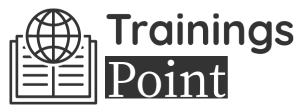The purpose of ICH Q9 is to ensure a systematic and proactive approach to managing risks that may affect product quality, patient safety, and data integrity. It recognizes that risk management should be an integral part of the pharmaceutical quality system and be applied throughout the lifecycle of a product, from development to post-marketing activities.
Overall, ICH Q9(R1) plays a crucial role in promoting a proactive and systematic approach to risk management in the pharmaceutical industry. It aligns with regulatory expectations and industry best practices, ensuring the delivery of safe and effective pharmaceutical products to patients worldwide.
The training session aims to provide participants with an understanding of the International Council for Harmonization (ICH) Q9 guideline, with a focus on the revised version, ICH Q9(R1). Participants will learn about the principles, concepts, and application of the risk management approach outlined in the guideline, and how it relates to the pharmaceutical industry.
This session will discuss some potential applications and tools used in the industry for Quality Risk Management. Additionally, a few examples of how to apply these applications will be reviewed.
WHY SHOULD YOU ATTEND?
Attending this training on ICH Q9 (R1) can provide individuals with the necessary knowledge and skills to implement quality risk management principles effectively. This can lead to regulatory compliance, improved quality systems, cost savings, enhanced decision-making, cross-functional collaboration, and a culture of continuous improvement within the pharmaceutical industry.
After this training, participants will be equipped with a foundational understanding of ICH Q9(R1) and its principles. They will be able to apply risk management practices in their respective roles within the pharmaceutical industry, contributing to improved product quality, patient safety, and regulatory compliance.
AREA COVERED
Introduction to ICH (Q9) R1 Regulations
- A brief overview of ICH and its Purpose
- Introduction to ICH Q9 and its Significance
Key Concepts and Definitions
- Understanding risk and risk management
- Principles of quality risk management
- Risk assessment, control, communication, and review
Risk Management Process
Overview of the risk management process:
- Risk identification
- Risk evaluation
- Risk Control
- Risk communication
- Risk review
Integration of Risk Management in the Pharmaceutical Industry
- Application of ICH Q9 in pharmaceutical manufacturing
- Risk management in drug development
- Risk management in post-marketing activities
Quality Risk Management Methods and Tools
Potential Applications for Quality Risk Management
LEARNING OBJECTIVES
- Understand the purpose and significance of ICH Q9(R1): Participants will gain knowledge about the International Council for Harmonisation (ICH) and its role in regulatory harmonization. They will understand the purpose and importance of ICH Q9(R1) as a guideline for quality risk management in the pharmaceutical industry.
- Comprehend key concepts and definitions: Participants will grasp the fundamental concepts and definitions related to risk and risk management. They will learn about the principles of quality risk management and become familiar with terms such as risk assessment, risk control, risk communication, and risk review.
- Gain knowledge of the risk management process: Participants will learn about the step-by-step risk management process outlined in ICH Q9(R1). They will understand the five key steps involved in risk management, including risk identification, risk evaluation, risk control, risk communication, and risk review.
- Recognize the integration of risk management in the pharmaceutical industry: Participants will understand how risk management principles and practices are applied in the pharmaceutical industry. They will gain insights into the application of ICH Q9(R1) in various areas, such as pharmaceutical manufacturing, drug development, and post-marketing activities.
- Overview of the Quality Risk Management Methods and Tools: Participants will be provided with a general summary of the methods and tools that are best practices in quality risk management.
- Identify potential applications for Quality Risk Management: This will help participants identify potential uses of quality risk management principles and tools by industry regulators.
WHO WILL BENEFIT?
Quality Assurance/Quality Control Professionals:
- Quality Assurance Managers
- Quality Control Analysts
- Compliance Officers
- Regulatory Affairs Specialists
Manufacturing and Operations Professionals:
- Manufacturing Managers
- Process Engineers
- Validation Specialists
- Production Supervisors
Research and Development Professionals:
- R&D Scientists
- Formulation Scientists
- Product Development Managers
Regulatory Affairs Professionals:
- Regulatory Affairs Managers
- Regulatory Compliance Specialists
- Regulatory Affairs Associates
Pharmacovigilance and Drug Safety Professionals:
- Pharmacovigilance Managers
- Drug Safety Specialists
- Medical Affairs Professionals
Risk Management Professionals:
- Risk Management Specialists
- Risk Assessment Analysts
- Risk Control Officers
Cross-Functional Team Members:
- Project Managers
- Cross-Functional Team Members involved in risk assessment and control
- Quality and Compliance Team Members
Attending this training on ICH Q9 (R1) can provide individuals with the necessary knowledge and skills to implement quality risk management principles effectively. This can lead to regulatory compliance, improved quality systems, cost savings, enhanced decision-making, cross-functional collaboration, and a culture of continuous improvement within the pharmaceutical industry.
After this training, participants will be equipped with a foundational understanding of ICH Q9(R1) and its principles. They will be able to apply risk management practices in their respective roles within the pharmaceutical industry, contributing to improved product quality, patient safety, and regulatory compliance.
Introduction to ICH (Q9) R1 Regulations
- A brief overview of ICH and its Purpose
- Introduction to ICH Q9 and its Significance
Key Concepts and Definitions
- Understanding risk and risk management
- Principles of quality risk management
- Risk assessment, control, communication, and review
Risk Management Process
Overview of the risk management process:
- Risk identification
- Risk evaluation
- Risk Control
- Risk communication
- Risk review
Integration of Risk Management in the Pharmaceutical Industry
- Application of ICH Q9 in pharmaceutical manufacturing
- Risk management in drug development
- Risk management in post-marketing activities
Quality Risk Management Methods and Tools
Potential Applications for Quality Risk Management
- Understand the purpose and significance of ICH Q9(R1): Participants will gain knowledge about the International Council for Harmonisation (ICH) and its role in regulatory harmonization. They will understand the purpose and importance of ICH Q9(R1) as a guideline for quality risk management in the pharmaceutical industry.
- Comprehend key concepts and definitions: Participants will grasp the fundamental concepts and definitions related to risk and risk management. They will learn about the principles of quality risk management and become familiar with terms such as risk assessment, risk control, risk communication, and risk review.
- Gain knowledge of the risk management process: Participants will learn about the step-by-step risk management process outlined in ICH Q9(R1). They will understand the five key steps involved in risk management, including risk identification, risk evaluation, risk control, risk communication, and risk review.
- Recognize the integration of risk management in the pharmaceutical industry: Participants will understand how risk management principles and practices are applied in the pharmaceutical industry. They will gain insights into the application of ICH Q9(R1) in various areas, such as pharmaceutical manufacturing, drug development, and post-marketing activities.
- Overview of the Quality Risk Management Methods and Tools: Participants will be provided with a general summary of the methods and tools that are best practices in quality risk management.
- Identify potential applications for Quality Risk Management: This will help participants identify potential uses of quality risk management principles and tools by industry regulators.
Quality Assurance/Quality Control Professionals:
- Quality Assurance Managers
- Quality Control Analysts
- Compliance Officers
- Regulatory Affairs Specialists
Manufacturing and Operations Professionals:
- Manufacturing Managers
- Process Engineers
- Validation Specialists
- Production Supervisors
Research and Development Professionals:
- R&D Scientists
- Formulation Scientists
- Product Development Managers
Regulatory Affairs Professionals:
- Regulatory Affairs Managers
- Regulatory Compliance Specialists
- Regulatory Affairs Associates
Pharmacovigilance and Drug Safety Professionals:
- Pharmacovigilance Managers
- Drug Safety Specialists
- Medical Affairs Professionals
Risk Management Professionals:
- Risk Management Specialists
- Risk Assessment Analysts
- Risk Control Officers
Cross-Functional Team Members:
- Project Managers
- Cross-Functional Team Members involved in risk assessment and control
- Quality and Compliance Team Members
Speaker Profile
 Meredith Crabtree
Meredith Crabtree
Meredith Crabtree has over 25 years’ experience in regulated industries, ranging from Blood, Plasma, Tissue, Laboratory, Pharma, Medical devices, Cosmetics, Supplements, and Animal Health manufacturing and distribution. Meredith works as a Quality Consultant performing label reviews, 3rd party inspections, Consent Decree, and Recall support. She also performs regulatory assessments and Quality training. Meredith has a degree in Medical Technology and is currently obtaining a degree in Quality Systems.
Upcoming Webinars

FDA Compliance And Laboratory Computer System Validation

The Anti-Kickback Statute: Enforcement and Recent Updates

Creating a Successful Job Rotation Program

Transforming Anger And Conflict Into Collaborative Problem …

Aligning Your HR Strategy with Your Business Strategy

How To Create Psychological Safety in your Organization

How to Give Corrective Feedback: The CARE Model - Eliminati…


Zero Acceptance Sampling to Reduce Inspection Costs

AI at Your Service: Enhancing Your Microsoft OfficeSkills w…

Identifying, Managing, and Retaining High Potential Employe…


Why EBITDA Doesn't Spell Cash Flow and What Does

Female to Female Hostility @Workplace: All you Need to Know

Human Factors Usability Studies Following ISO 62366 and FDA…

Developing and Implementing Quality Culture in the Organiza…

Dealing With Difficult People In Life & Work

How to Document Employee Discussions and Why it is Important

Project Management for Non-Project Managers - How to commun…

FDA Recommendations for Artificial Intelligence/Machine Lea…

2-Hour Virtual Seminar on the 6 Most Common Problems in FDA…

Enhancing Pivot Tables with Images: Visualize Your Data Lik…

How to Deal with Employees Who Love to Argue and Debate Eve…

How to Write Contracts for Procurement Professionals

Project Management for administrative professionals

Sunshine Act Reporting - Clarification for Clinical Research


Reprogramming your mind for Corporate Excellence: 4 Steps t…

Terminating Toxicity: Strategies For Leaders To Confidently…

Transform Data into Insights: A Beginners Guide to Excel Pi…

Onboarding Best Practices for 2025: Proven Strategies to Po…

How to Manage the Legal Landmine of the FMLA, ADA and Worke…

Uplifting the Credibility of HR: How to Build the Credibili…

How to Write Effective Audit Observations: The Principles f…

Strategic Interviewing & Selection: Getting the Right Talen…


Bridging Generational Divides in the Workplace

Onboarding Best Practices for Millennial and All Employees

Performance of Root Cause Analysis, CAPA, and Effectiveness…


Emotional Intelligence: Mastering the Emotions of Great Lea…

FDA Audit Best Practices - Do's and Don'ts

2-Hour Virtual Seminar on How to Conduct an Internal Harass…

Successful Strategies for FDA Expedited Pathways for Your D…

Regulation update Q1 2025: New and Proposed Regulations for…

Unlock Employee Loyalty: Stay Interviews Will Keep Them Eng…

Pay Transparency in Action: Strategies for Building Trust a…

Excel Lookup Functions: VLOOKUP, HLOOKUP, and XLOOKUP Made …
